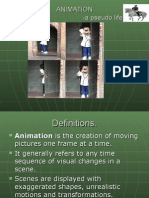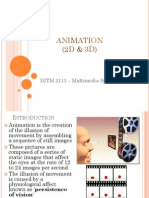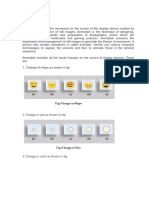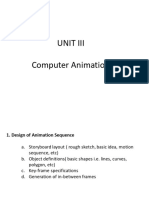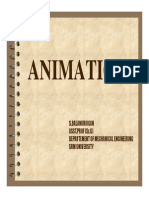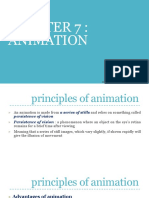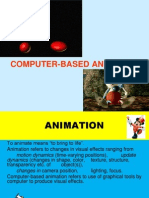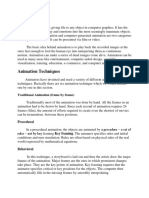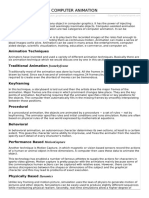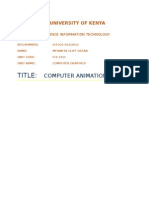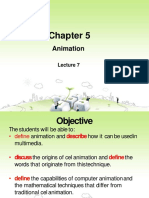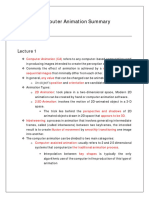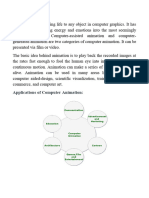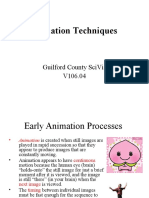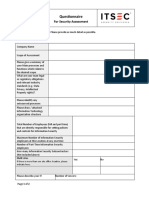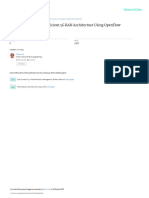0% found this document useful (0 votes)
46 views5 pages4) Computer Animation
The document provides an overview of computer animation, defining it as the creation of moving images using computer technology. It outlines various types of animation, including 2D, 3D, motion graphics, and stop-motion, along with their applications in education, entertainment, advertising, and presentations. Additionally, it discusses the animation process, including storyboarding, object definition, keyframe specification, and the generation of in-between frames.
Uploaded by
velay22446Copyright
© © All Rights Reserved
We take content rights seriously. If you suspect this is your content, claim it here.
Available Formats
Download as PDF, TXT or read online on Scribd
0% found this document useful (0 votes)
46 views5 pages4) Computer Animation
The document provides an overview of computer animation, defining it as the creation of moving images using computer technology. It outlines various types of animation, including 2D, 3D, motion graphics, and stop-motion, along with their applications in education, entertainment, advertising, and presentations. Additionally, it discusses the animation process, including storyboarding, object definition, keyframe specification, and the generation of in-between frames.
Uploaded by
velay22446Copyright
© © All Rights Reserved
We take content rights seriously. If you suspect this is your content, claim it here.
Available Formats
Download as PDF, TXT or read online on Scribd
/ 5

